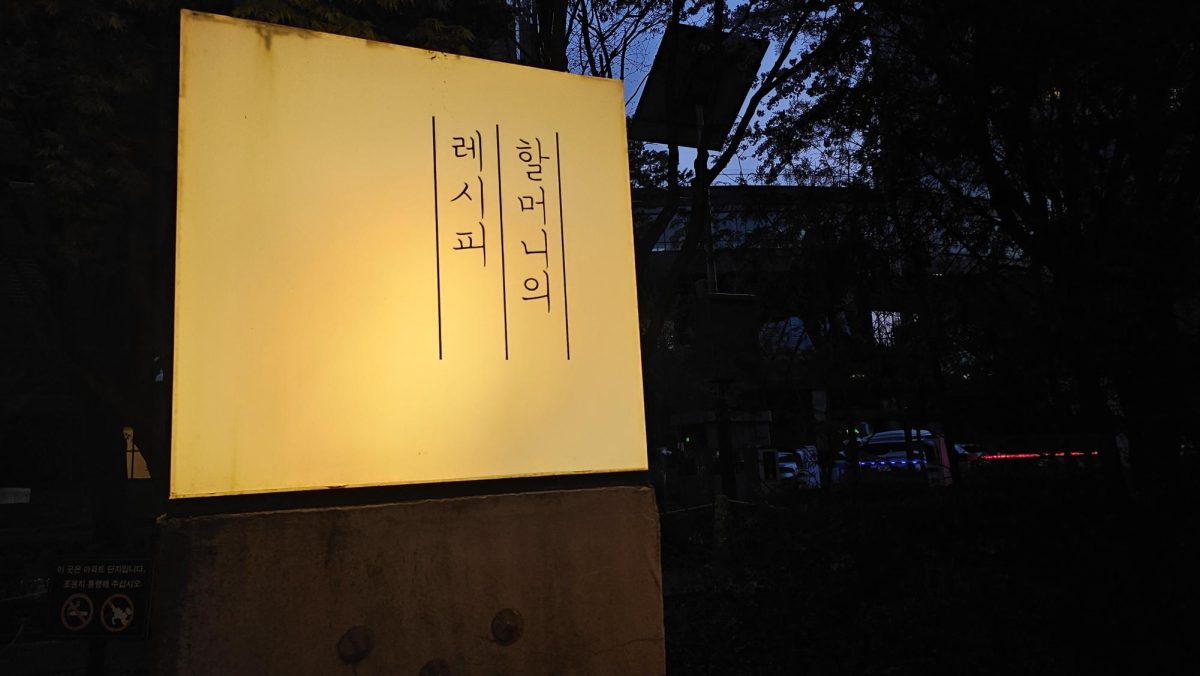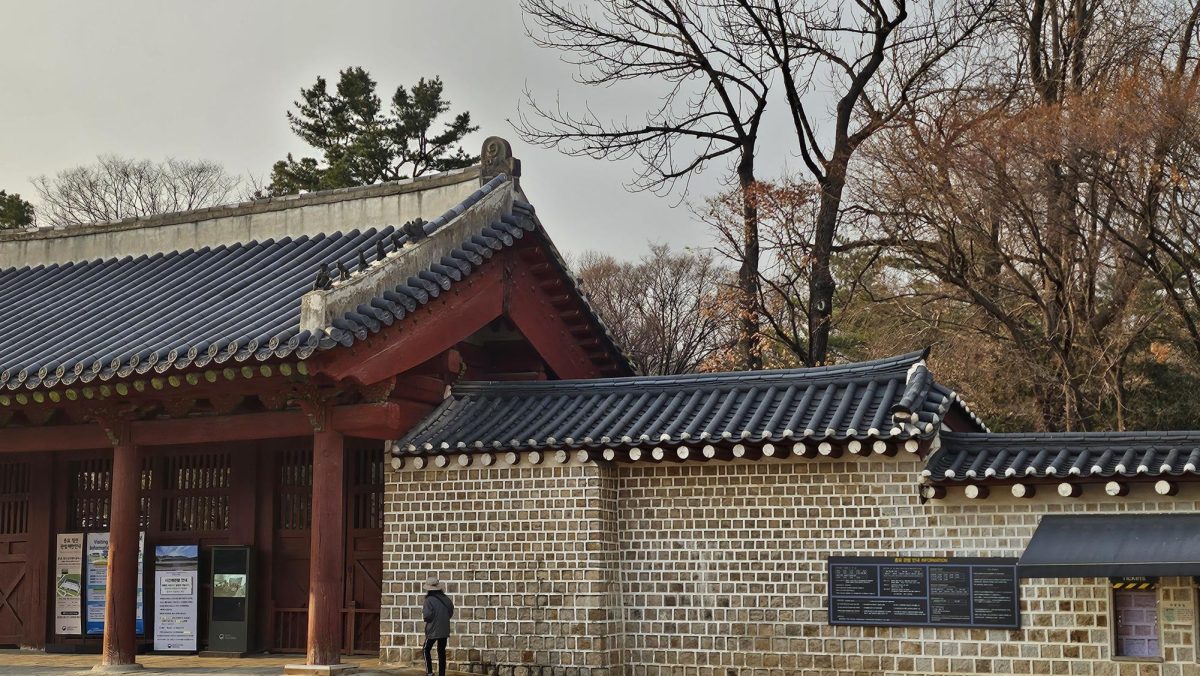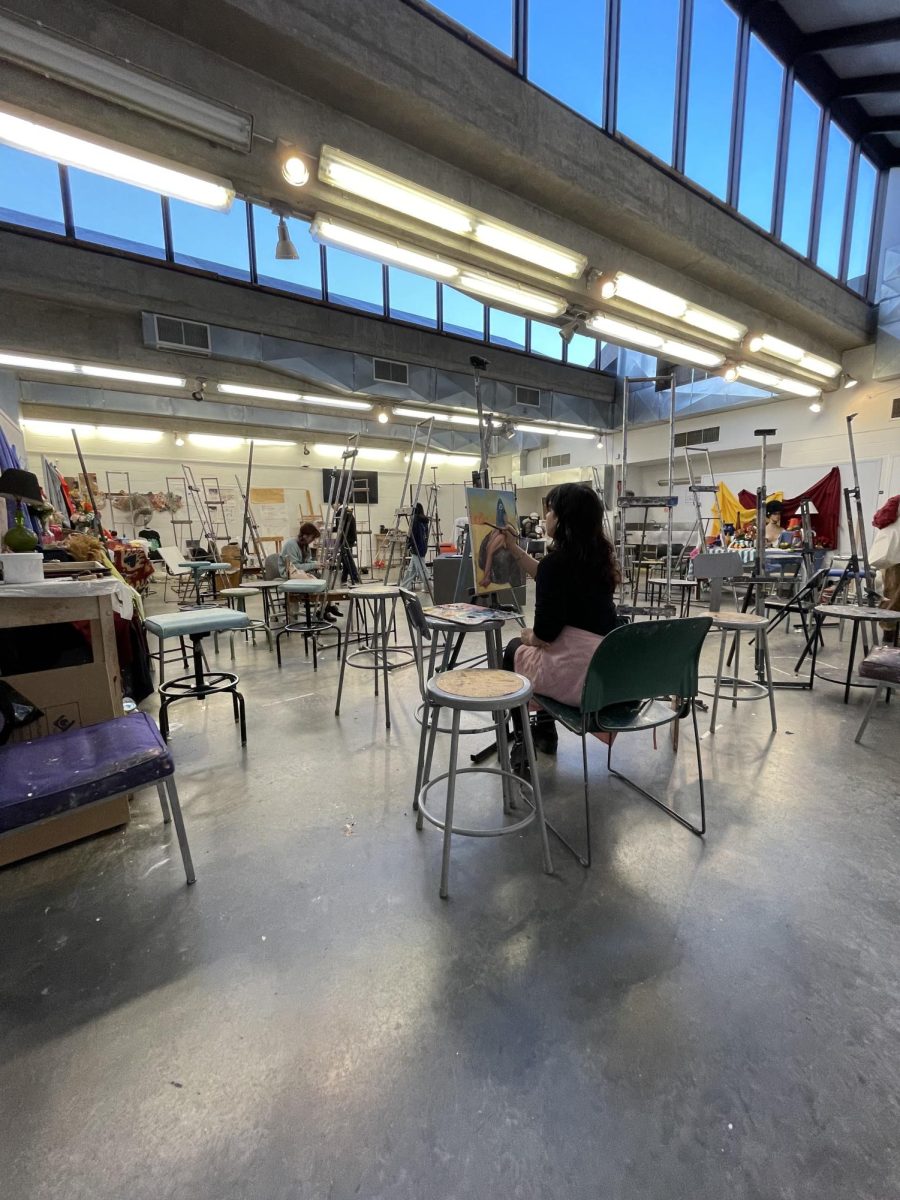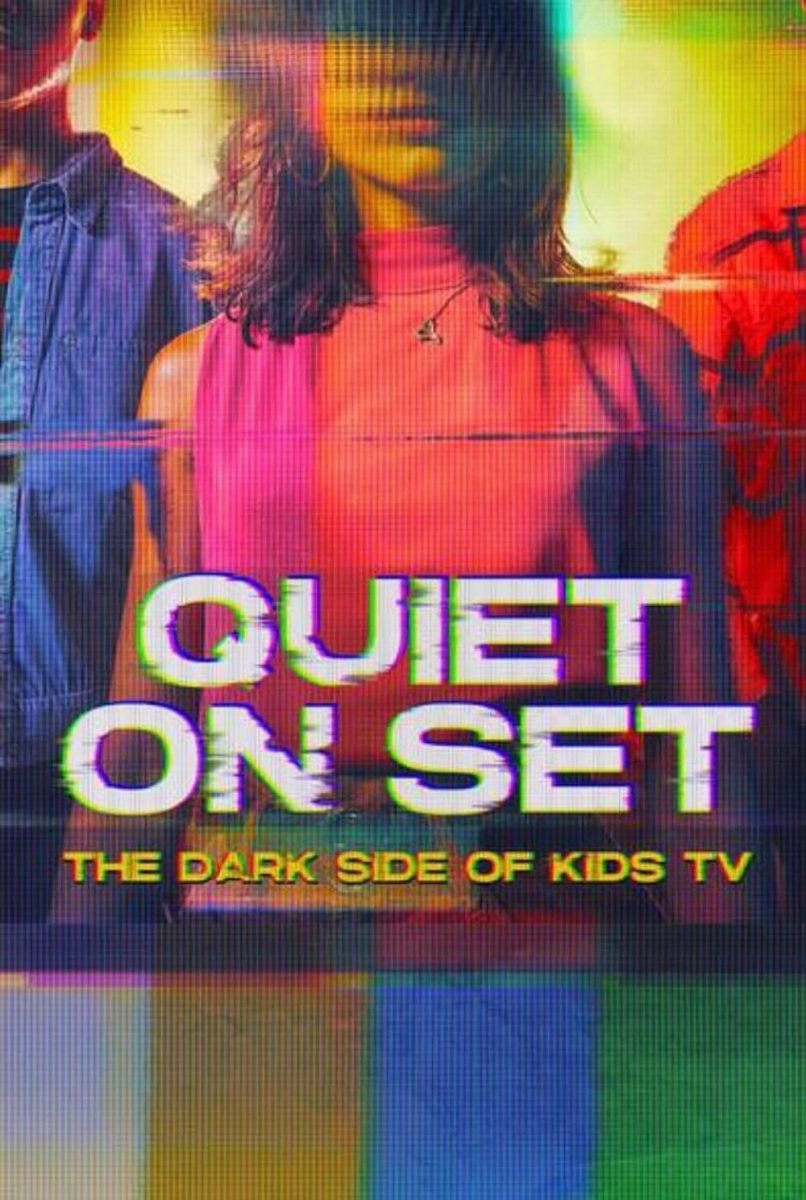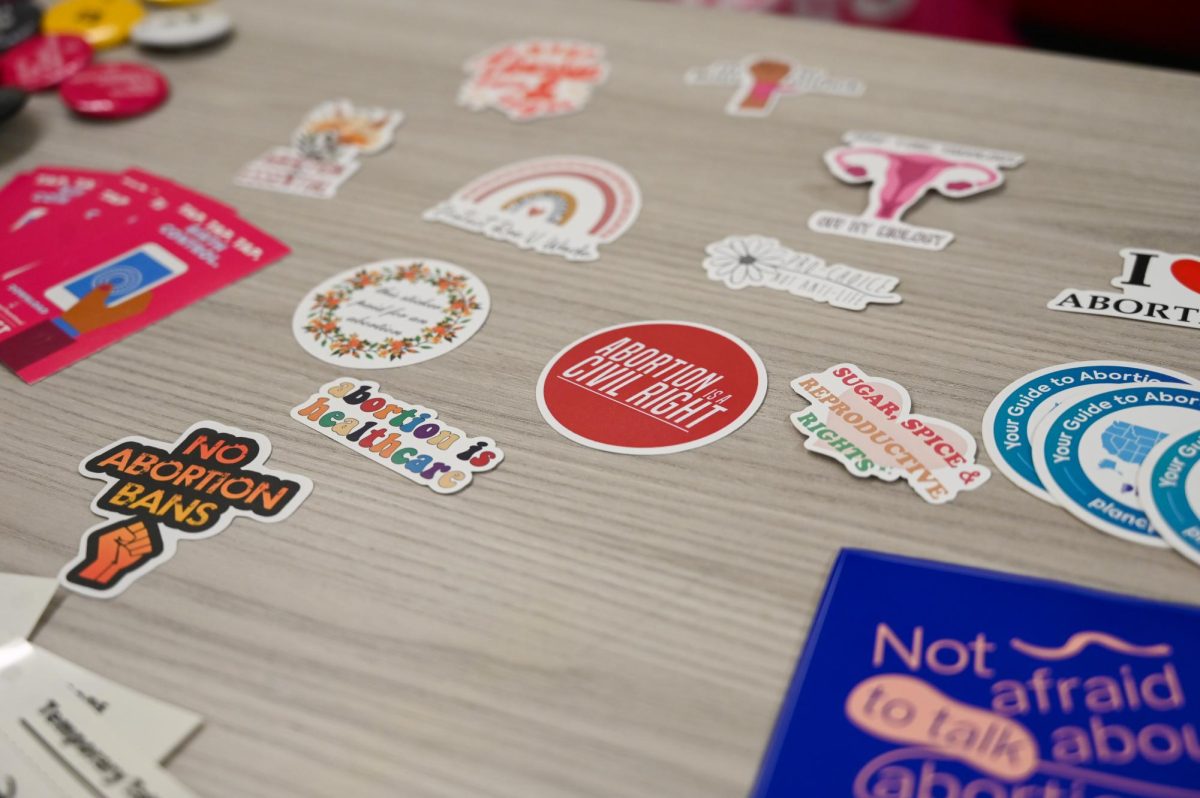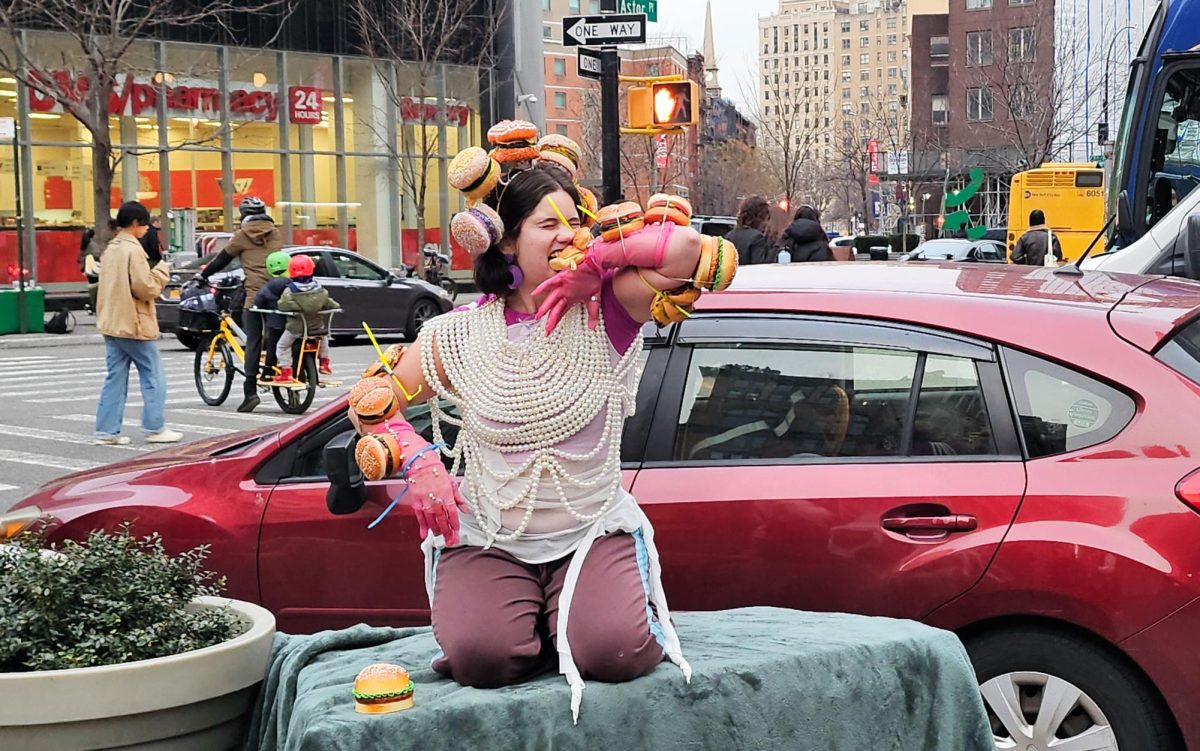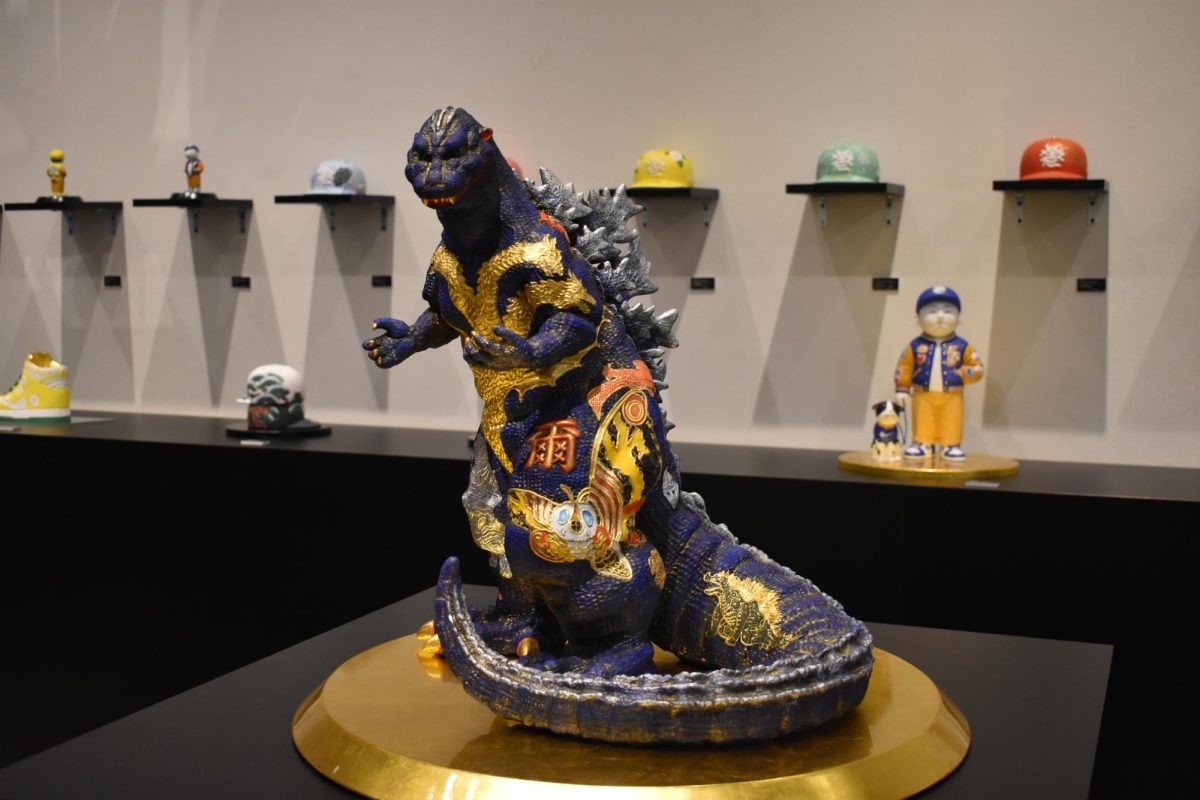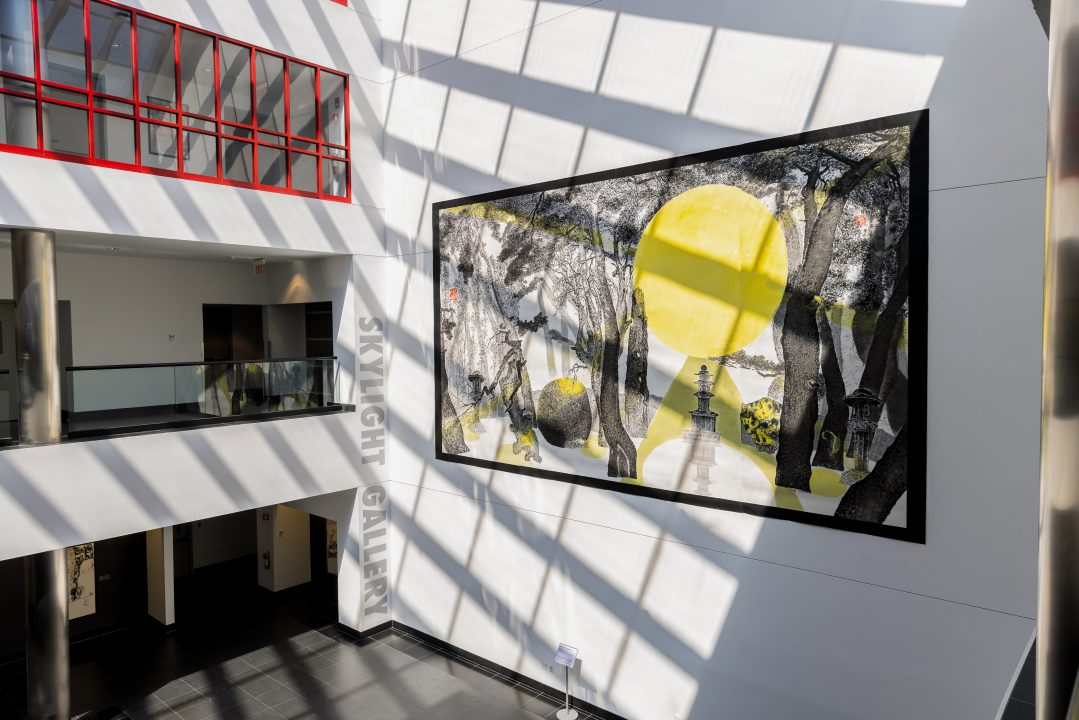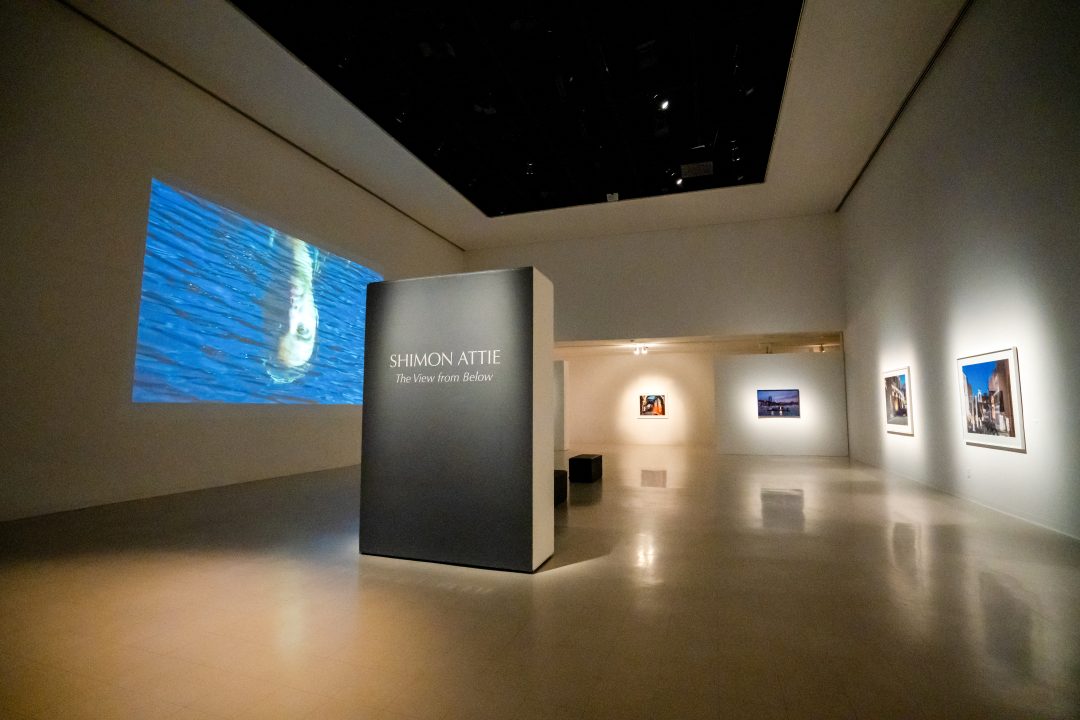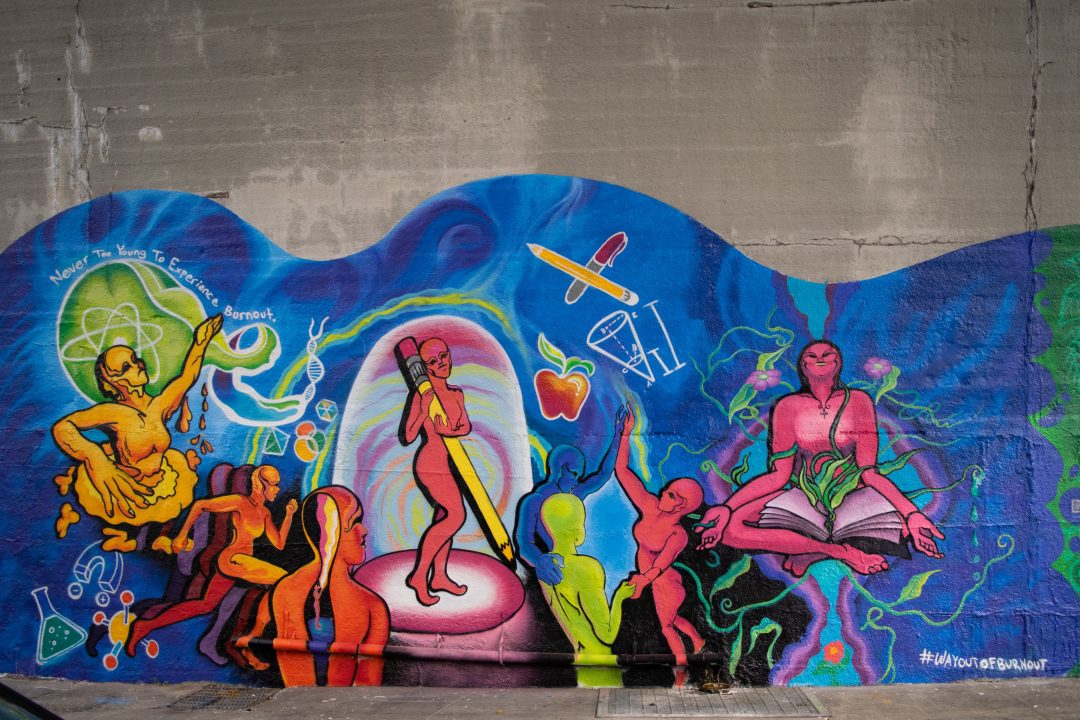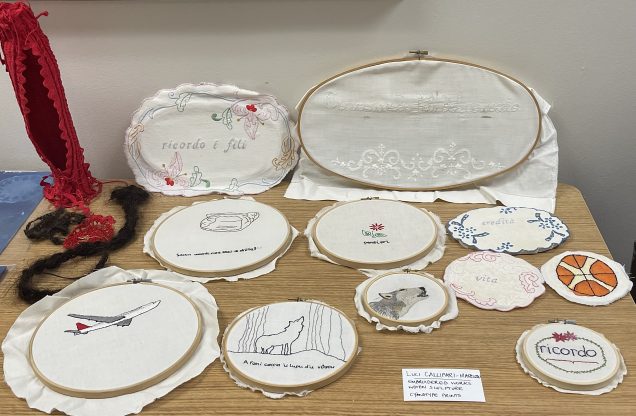
Hosted by the Center for Italian Studies, artists B. Amore and Luci Callipari Marcuzzo visited Stony Brook University on Sept. 20 for a discussion titled “Tracing the Threads of Migration and Female Narratives of the Italian Diaspora.”
Accompanied by author Mary Jo Bona and D’Amato Chair in Italian American Studies Loredana Polezzi, the conversation covered their personal experiences with their heritage, their art and the connection between the two.
Amore, an artist, educator and writer, had her book, “An Italian American Odyssey, Life line-filo della vita: Through Ellis Island and Beyond,” premiered at Ellis Island and published by Fordham Press and the Center for Migration studies. Amore’s work on Ellis Island was heavily influenced by her grandmother, who shared stories with Amore as a child.
Luci Callipari Marcuzzo, based in Australia, has artwork themes focused on religion, spirituality and Italian cultural practices. She drew some of the inspiration for her artwork from family members that were immigrants from Southern Italy, who then immigrated to Australia.
These women not only exemplify their own personal stories through their art but stories that others can resonate with. They both host exhibits and events, as well as have casual meet-ups with their art observers. A moving response to Amore’s art came from a family she had met at Ellis Island.
“I was there at Ellis Island one afternoon and a family came in, mother, father, two children, the boy maybe about 14, they were there for about two hours reading everything so I went up to them saying I was the artist,” Amore said, adding that the mother of the family said that she was born in the Bronx. “I could never understand why my family was the way they were, now I understand.”
The young boy Amore spoke with had explained he was looking for answers about his heritage from history class, and found all he needed to know within the artwork.
“It made me feel good because I had done three years of research on the Ellis Island archives and I had quotes from Italian immigrants,” Amore said.” I wanted a balance between the general immigrants’ stories and my family’s.”
In Luci Callipari Marcuzzo’s case, people have drawn curiosity from her artwork.
“As a young girl, I was taught embroidery, and that’s a common theme with people I’ve interacted with. There’s a collaborative workshop I do called Collective Crochet that anyone can do, and the stories shared are really important because they become interwoven,” Marcuzzo said of her work.
Both these artists convey significant messages through art and writing. “Art is a visual language and it bypasses a lot of prejudices people have; when people are looking at work that I make, it’s something abstract that they can respond to,” Amore said. “As an artist you feel seen, it’s a labor of love, in a way I feel I’m being of service.”
Amore, who finds poetry to be just as effective in artistic expression as her other modes, explained what it means to her.
“Poetry is such a deep feeling, it’s almost wordless even through [the words] you use to express it, poetry where the person’s voice is being expressed from their desire, pain or joy,” Amore said.
She has art and poetry review publications in Sculpture magazine, Art New England, the Rutland Herald and VIA, as well as writings such as “Art by Mexican Farmworkers in Vermont” and “Carving Out a Dream.”
Marcuzzo also thinks of poetry as an expressive art form. “I’m part of a writer’s group in Australia, and for me, I love poetry, and the aim is to create something that’s visual with the words,” she said.
One of her books “Stories from the Inside: Ascolta Women Write,” is a collective of creative multi-generation Italian Australians and speaks on women’s stories and immigration. The women explained the continuous process of people trying to connect more with their roots, considering that their artwork correlates with culture and self-discovery.
“We all come with a lot of self criticism, some we’ve learned and some that’s been imposed on us. When you love and accept yourself, you realize how connected you are to your roots, it’s a lifetime practice,” Amore said.
Through her sculptures and writings, she explores the relationship between human perception and history. “People want things to be black and white, but it’s a constant process, and quite an exciting journey,” Amore said.
In Marcuzzo’s “Credo: Beyond Belief” piece from 2009, she portrays prayer cards and traditional women’s crafts to show how common items contribute to women’s lifestyles, and how her own family’s migration story was built upon their faith in each other and in religion.
“There’s quite a number of people that don’t have access to speak directly to their families, but the best way to connect is to go to archives, talk to people whose stories are passed down, or travel if you can,” Marcuzzo said.











